REGIONAL INDUSTRIAL TRANSITIONS TO CLIMATE NEUTRALITY POLICY HIGHLIGHTS
ABOUT THE OECD
The OECD is a unique forum where governments work together to address the economic, social and environmental challenges of globalisation. The OECD is also at the forefront of efforts to understand and to help governments respond to new developments and concerns, such as corporate governance, the information economy and the challenges of an ageing population. The Organisation provides a setting where governments can compare policy experiences, seek answers to common problems, identify good practice and work to co-ordinate domestic and international policies
ABOUT THE CENTRE FOR ENTREPRENEURSHIP, SMEs, REGIONS AND CITIES
The Centre helps local, regional and national governments unleash the potential of entrepreneurs and small and medium-sized enterprises, promote inclusive and sustainable regions and cities, boost local job creation and implement sound tourism policies*
The full book is accessible at: Regional Industrial Transitions to Climate Neutrality


OECD Publishing, Paris
This document, as well as any statistical data and map included herein, are without prejudice to the status of or sovereignty over any territory, to the delimitation of international frontiers and boundaries and to the name of any territory, city or area.
Note by Turkey:
The information in this document with reference to “Cyprus” relates to the southern part of the Island. There is no single authority representing both Turkish and Greek Cypriot people on the Island. Turkey recognises the Turkish Republic of Northern Cyprus (TRNC). Until a lasting and equitable solution is found within the context of the United Nations, Turkey shall preserve its position concerning the “Cyprus issue”.
Note by all the European Union Member States of the OECD and the European Union:
The Republic of Cyprus is recognised by all members of the United Nations with the exception of Turkey. The information in this document relates to the area under the effective control of the Government of the Republic of Cyprus.
© OECD 2023
This document is published under the responsibility of the Secretary-General of the OECD. The opinions expressed and arguments employed herein do not necessarily reflect the official views of OECD member countries. The document and any map included herein are without prejudice to the status of or sovereignty over any territory, to the delimitation of international frontiers and boundaries and to the name of any territory, city or area.
Policy highlights
Most OECD countries aim to reach climate neutrality by 2050. Some of the economic activities that are most difficult to make climate neutral are in manufacturing and many of these activities are regionally concentrated Therefore, national and regional policy makers, firms and workers need to understand which regions are most affected and how.
To reach climate neutrality, manufacturing will require new forms of production, including new energy carriers and new materials It will also need different and more investment, new infrastructure and new worker skills In some regions, firms and workers will be better prepared

than in others to master these transformations and benefit from them Sectors may lose employment in some regions, while new activities will attract an increasing number of workers These impacts will affect the regional economies more broadly. Some regions may be more vulnerable, for example, because their economic activity is less diversified or incomes are lower
Preparing the most exposed regions for these transformations is therefore important, both for managing the challenges and for exploiting opportunities. Else, some regions may fall behind. These issues are explored for European regions but apply to industrial nations outside Europe too.
Regional Industrial Transitions to Climate Neutrality | 3
The biggest emissions and transformation challenges are concentrated in a few key manufacturing sectors
The manufacturing of coke and refined petroleum, chemicals, non-metallic minerals and basic metals account for most manufacturing emissions across the European Union. Together with paper and pulp manufacturing, they are also the most energy intensive sectors In the manufacturing of non-metallic minerals, emissions and transformation challenges are concentrated in cement. In basic metals they are concentrated in steel and aluminium. In these key sectors shared transformation challenges include reducing energy consumption, shifting to zero-carbon energy sources and moving towards a circular economy. Moving to a circular economy brings other environmental benefits, such as reduced pollution of air, land and water. The
manufacturing of vehicles is not emissions or energy intensive but faces transformations on the way to electric mobility, smaller cars, and less car use, especially in cities.
These key sectors described above are characterized by heavy use of long-lived production assets. Upcoming investment decisions must hence be consistent with climate neutrality to avoid wasted investment. Some of these sectors will require hydrogen or carbon capture and storage (CCS) to decarbonise Decarbonised freight is important for all of them, as they are deeply integrated in regional and global value chains.

Regional Industrial Transitions to Climate Neutrality 4 |
Many regions most exposed to the transition in manufacturing are in Central Europe
Challenges are likely to be largest in the regions where employment shares and emissions per capita in the key sectors are high. These exposed regions will have to decarbonise production assets while at the same time capitalising on opportunities to ensure a just transition for their workers, for example, through reskilling. 41 European regions are identified as particularly exposed (Figure 1) Many of these regions are in Northern and Central Europe, including Czech Republic, Germany, Hungary and Poland. In
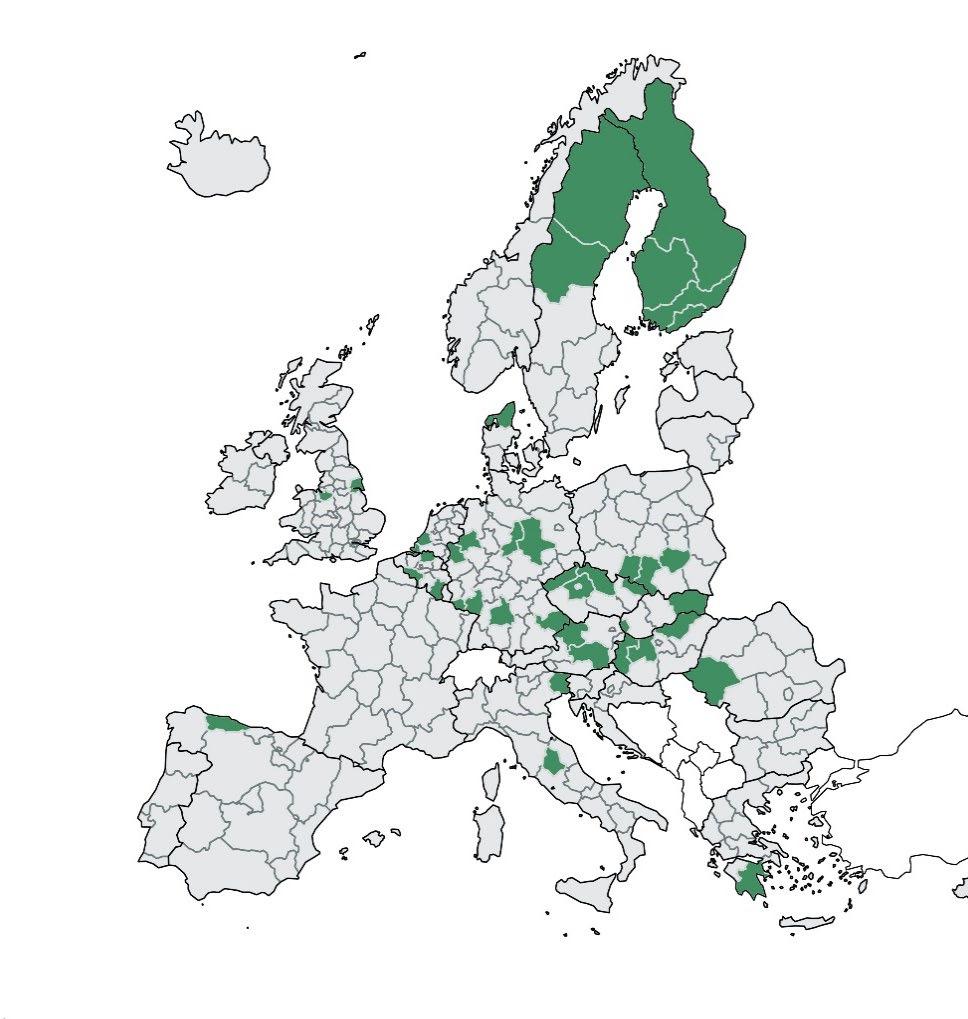
addition, exposed regions in chemicals and oil refining are also in Western Europe (Belgium, Germany and the Netherlands). Northern Europe has exposed regions in the production of paper and pulp. Southern Europe has exposed regions in vehicle manufacturing (Romania), oil refining (Greece), non-metallic minerals (Italy) and basic metals production (Italy and Spain).
Figure 1. Regions most exposed to the transition to climate neutrality in key manufacturing sectors are mainly in central Europe
Regions differ in infrastructure needs to make manufacturing climate neutral
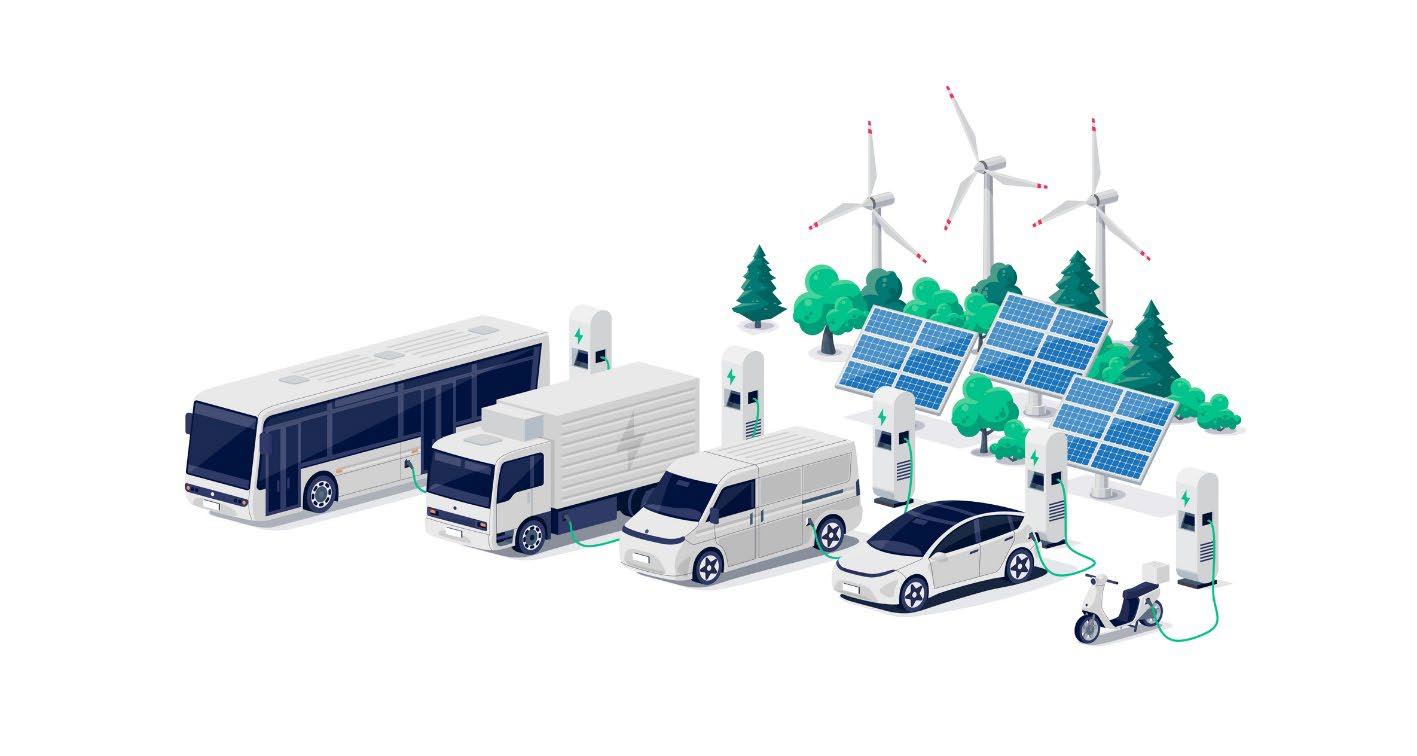
The transition of key manufacturing sectors to climate neutrality will require infrastructure for the provision of hydrogen, CCS and zero-carbon freight Access conditions to the needed infrastructure will differ across regions. To prepare a just transition, it will be important to identify regional infrastructure investment needs, the related costs, and to determine whether manufacturing activity depending on such infrastructure is feasible.
The production of chemicals is relatively clustered, while cement production is rather dispersed. This will affect access to zeroemission-consistent infrastructure Both hydrogen, which is necessary for climate-neutral steel and chemicals production, and captured CO2 emissions, most likely necessary for climateneutral cement production, are best transported via pipelines. Clustered production sites will be able to share infrastructure costs and therefore face lower costs than dispersed ones. Hydrogen demand will be particularly concentrated in Northwestern continental Europe, with a strong chemical cluster (Figure 2).
Some regions will be able to repurpose natural gas pipelines for hydrogen at lower cost and take advantage of resulting opportunities. In some regions, the distances from production to CO2 storage sites may be longer, adding to costs, or viable storge sites may not have been explored Access to ports is important – as an entry point for hydrogen, but also for shipping materials and goods to and from overseas. In some regions, the distance of production sites to ports is bigger and rail infrastructure less developed. They may therefore face higher costs in decarbonising heavy-duty road transport.
Regions facing higher costs for getting access to infrastructure may often be poorer regions. They may have less clustered industrial production, may be more distant to known, viable CO2 storage sites and have less access to rail infrastructure. They may also be less able to invest in such infrastructure. Therefore, regional industrial transitions must be prepared now to make sure regional economic divergence is not reinforced
Regional Industrial Transitions to Climate Neutrality 6 |
Some regions will be less prepared than others to face the challenges of the transition or take advantage of opportunities. Understanding the vulnerabilities of regions, as well as of their workers and firms operating in the key sectors will
help ensure a just transition and make them more resilient in climate neutrality
Most of these exposed regions are weaker than the national average on several socio-economic
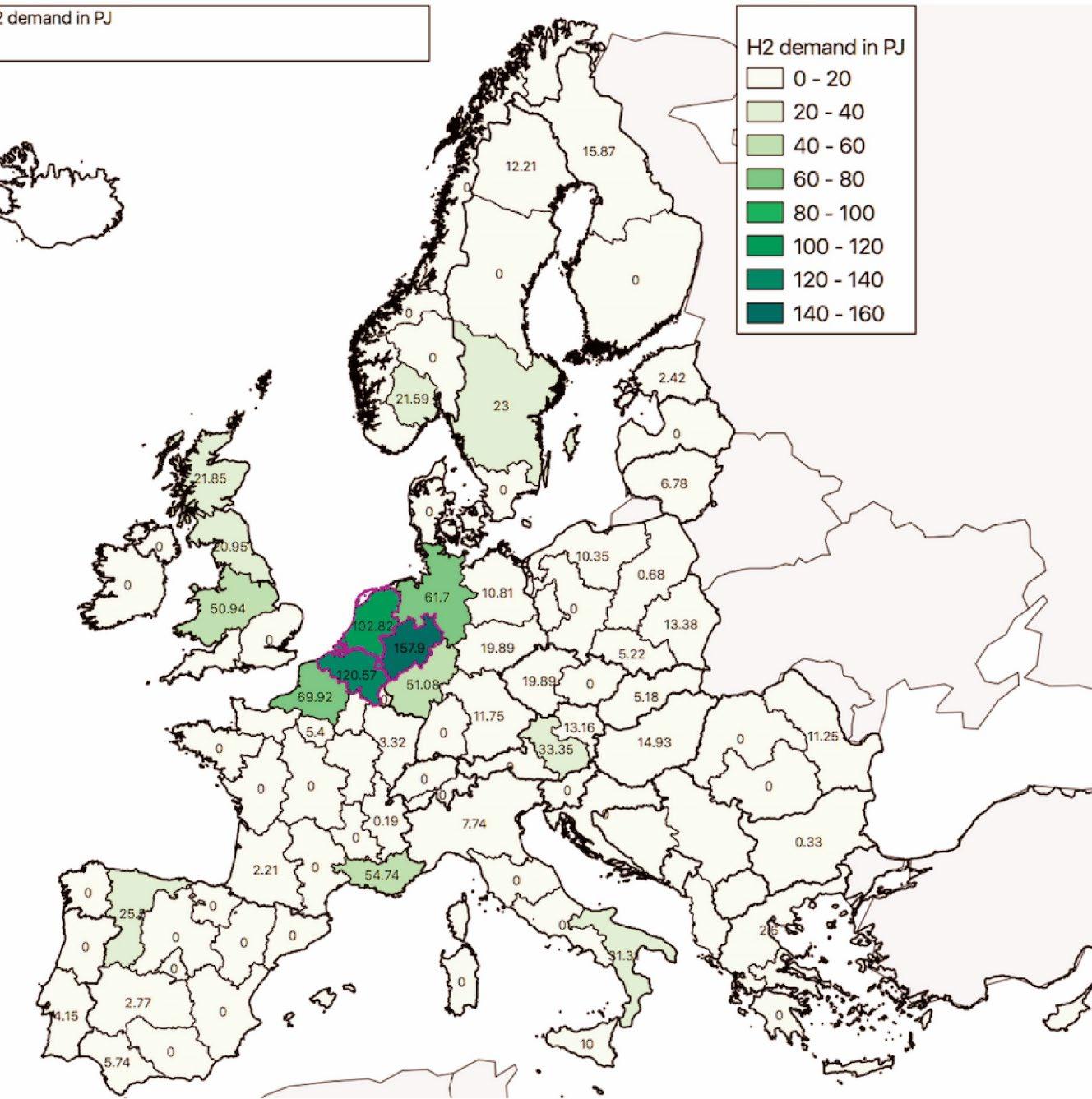 Figure 2. Hydrogen demand to decarbonize chemicals and steel production
Source: (ENTSO-E, 2014[12]), and Wuppertal Institute calculations. Note: PJ means petajoule.
Figure 2. Hydrogen demand to decarbonize chemicals and steel production
Source: (ENTSO-E, 2014[12]), and Wuppertal Institute calculations. Note: PJ means petajoule.
Some regions, their workers and firms are particularly vulnerable to the transition
characteristics (Figure 3) Their GDP per capita and their wages are up to 38% lower. These regions and their workers will therefore have fewer resources to take advantage of opportunities and absorb potential shocks. In some of these regions, households are at higher risk of poverty and the population is less-well educated Often, they are not attractive to incoming workers and firms and appear poorly positioned to benefit from digitalisation, reducing opportunities for economic diversification.
By contrast, unemployment is relatively low in the most exposed regions. This may be the result of their strong manufacturing base. The key manufacturing sectors often provide much better-paid jobs than other jobs in the regions most exposed to the transition. Hence, any transitional challenges which may affect employment, could have a significant regional economic impact.
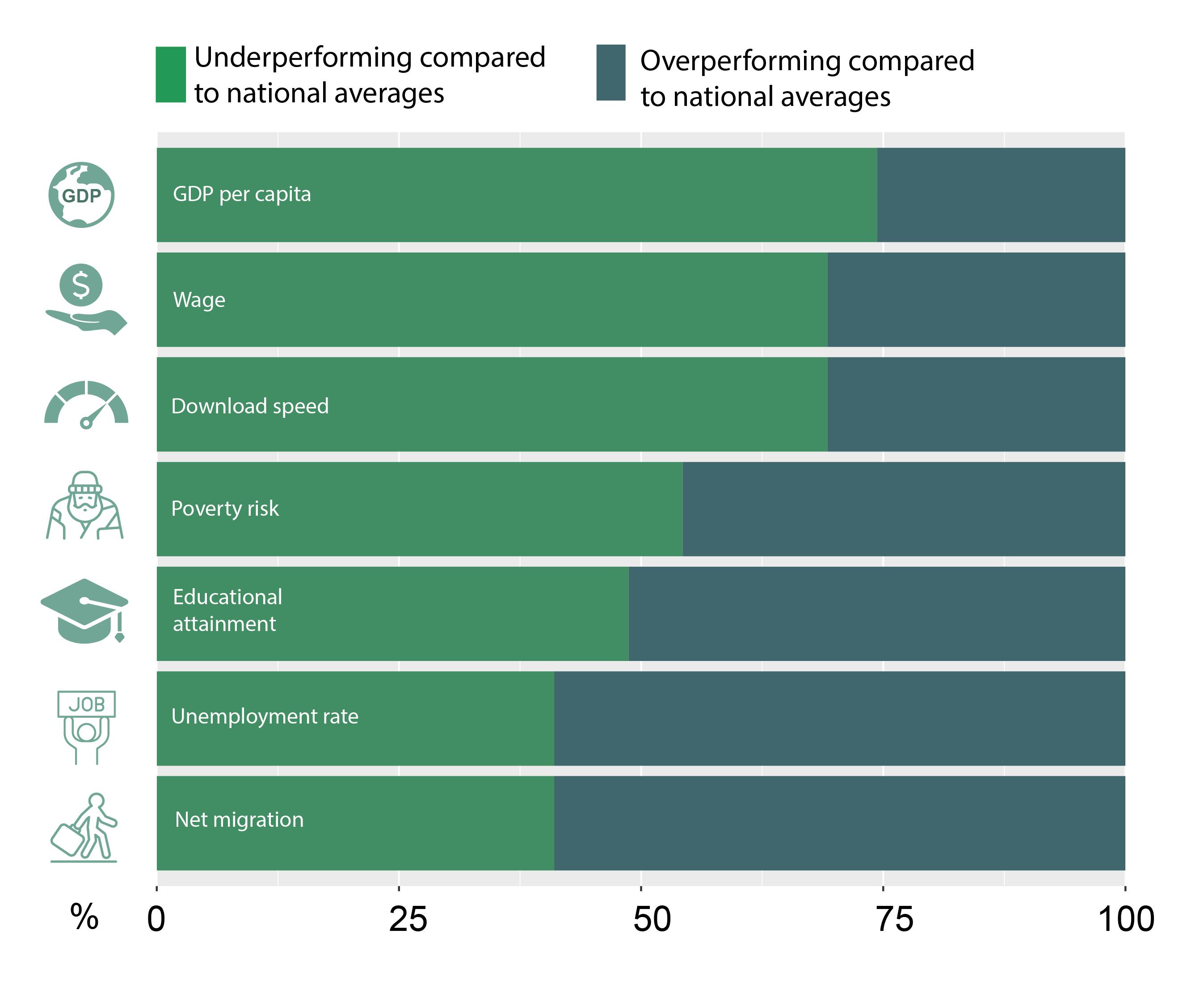
Workers in the key sectors will be first in line in facing jobs impacts of the transformations. Worker vulnerability differs across the regions most exposed to transformations For example, in non-metallic minerals, the majority of workers in the exposed regions have wage earnings in the lower half of the national earnings distribution, but shares vary substantially across regions most exposed to the transition (Figure 4). Low educational attainment and low-skill
employment are widespread among workers in the key sectors in several of these regions. Men occupy most of the jobs across all key sectors Where gender-biased distribution of roles in households still prevails and men’s wages provide most household earnings, any adverse socioeconomic impacts from job loss or transformation challenges may be further heightened. In contrast, women are typically more exposed to risks from low earnings and low-skill jobs. Older workers may have the lowest incentives to invest
Regional Industrial Transitions to Climate Neutrality 8 |
Figure 3. Performance on socio-economic indicators is weak in many exposed region
in new skills, while young workers need to build their carriers in the transition to climate neutrality, but are often particularly vulnerable to
low earnings and temporary contracts, reducing access to firm-sponsored training.
Firm productivity in these sectors also varies across regions Highly productive firms will be best able to integrate new technologies. In addition, higher firm productivity often leads to higher profits, the most important funding source for the substantial investment the transformations require.
Some regions face multiple socio-economic vulnerabilities. These are especially regions hosting activity in basic metals (notably steel and aluminium) and non-metallic minerals (notably cement) manufacturing. For example, MoraviaSilesia in the Czech Republic and East Slovakia are vulnerable on account of all their regional indicators These regions also appear to be home
to a great number of workers in low skill occupations in the key manufacturing sector they host, with more than 3 out of 4 workers in the manufacture of basic metals in low-skill jobs. Summing up, some regions will be particularly exposed to the transformations in manufacturing sectors that are difficult to make climate neutral. Many of these regions are particularly vulnerable on account of their socio-economic characteristics. Some of them face multiple vulnerabilities in terms of regional, worker and firm characteristics. Policy action is therefore needed to prepare these transformations and provide support to the most vulnerable regions to make the most of the opportunities
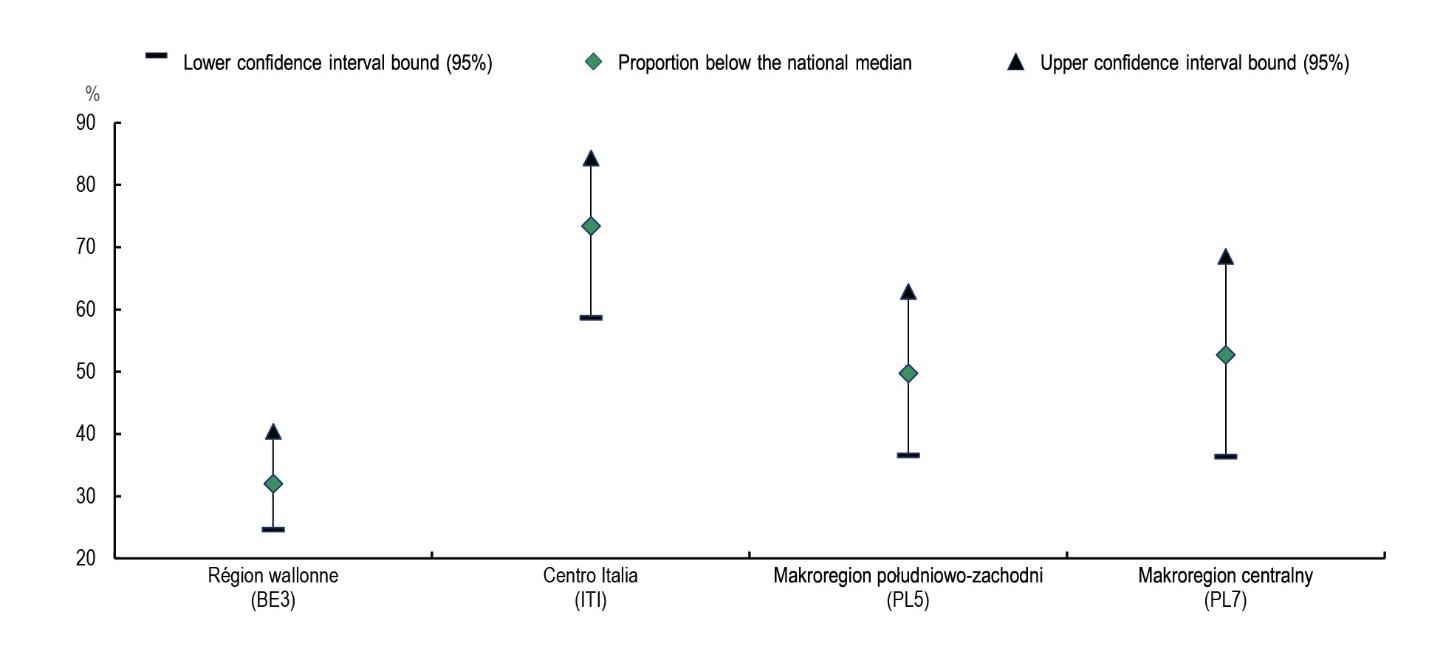
Regional Industrial Transitions to Climate Neutrality | 9
Figure 4. The share of vulnerable low-earning workers is high in some regions
Share of low-earning workers employed in non-metallic minerals in most exposed regions.
Note: Low-earning individuals are those earning below the nation al median

@OECD_local #OECDregions | blog: oecdcogito.blog/ Follow us More information: www.oecd.org/regional /company/oecd-local COGITO Co-funded by the European Union







 Figure 2. Hydrogen demand to decarbonize chemicals and steel production
Source: (ENTSO-E, 2014[12]), and Wuppertal Institute calculations. Note: PJ means petajoule.
Figure 2. Hydrogen demand to decarbonize chemicals and steel production
Source: (ENTSO-E, 2014[12]), and Wuppertal Institute calculations. Note: PJ means petajoule.





